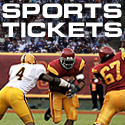Understanding your opponents
07/05/2006
More Poker Pointers / Poker Home / Bullz-Eye Home
A fundamental part of hold'em poker is understanding your opponents. So much of hold'em poker is less about the cards and more about the actions taken by players that it could be argued that your table image is more important overall than your actual cards from hand to hand.
This is because the way your opponents interpret your actions will determine how they will play against you in the hand. The more hands you play, the more of a character sketch good players will make of you. You have to both be aware of this when you're acting in each hand and make your own character sketches (in your head, on paper, or some online poker rooms have note taking built in) of your opponents as you play.
Some examples of player traits are playing overly aggressive/playing loose, playing tight, etc. An example of an overly aggressive/loose player is someone who raises very often when having no hand. These players are hoping by applying pressure they will get others to fold their hands so that they can win the pot. These players are quickly put out of the tournament because it is very easy to counter this style of play. You fold until you get a very strong starting hand such as a high pocket pair, very high connectors, or very high suited connectors. When the player bets aggressively you can choose whatever way you think you will be able to extract the most money. Usually these types of players will quickly fold their hands if you reraise or bet too much. Usually the best play is to just call and let them bury themselves. This way they are less likely to fold or get a read on your hand strength. A large bet after the river is the play if you wish to hammer the nail in at that point.
Conversely, a tight player would be one who fold most of his hands preflop. Usually a tight player would only play at most about 33% of his hands to the flop. Since playing tight usually means only playing highly ranked starting hands this means players will be more likely to fold to a raise from a player who has been playing tight.
I recommend that when you first arrive at a table you play very tight and watch your opponents intently. Pay close attention to how they are playing each hand, and then compare their actions to what cards they had. You will only get to see your opponents' cards if they stay in to the showdown so keep a close watch. Don't just look at the hand that won. Look at all the hands that are shown. While a hand is being played watch each player's actions. Each action can be classified in one of three basic categories. These are aggressive, passive, and defensive. It is important to understand these classifications do not apply to players but, rather, apply to each action taken by each player in every betting round.
For example, if a player raises, that action is classified as aggressive. An example of a passive action would be checking or just calling a minimum bet. Defensive actions can be sometimes confused with passive actions to the untrained eye. An example of a defensive action would be if a player checks to an aggressively betting player so that they can just call that bet without having to put a bet out that would then be re-raised. The aim of a defensive action is to limit the amount the player will have to put into the pot to see the next card or cards.
By classifying each player's action you can start to get an idea of what types of cards the player might have. A player who is making aggressive actions might already have a made hand or a strong start. A player making passive actions probably is on a relatively weak draw, has a weak hand, or has no hand and is hoping to make one by calling only a minimal bet amount or checking if possible. A player who is making defensive actions may feel they have the best hand but they don't feel too strongly about it and so try to limit the amount they have to call to get to the showdown. A player making defensive actions may also be on a good draw and want to chase the draw while limiting the amount they will have to call to do this.
By classifying the actions each player takes throughout a hand you can start to make educated guesses as to what they may have, taking into account what cards are on the board and what types of actions they have been taking. Then by comparing the actions they have taken throughout the hand with the cards they show at the showdown, you can start to classify your opponent.
In hold'em poker, the more you know about the opponent or opponents you're in the hand with, the better. By spending the time and effort studying your opponents' actions, you will know what the right play to make is when it counts.
Questions or comments? Post them here.
ADVERTISE WITH US! If you're trying to reach men in their 20s and 30s, or you're trying to reach male readers who have an interest in things like poker and trips to Vegas, Bullz-Eye.com's Wagering Channel can be an excellent resource. We offer text link ads and banners of all sizes. Our traffic has grown to more than 60 million page views and 4.5 million unique visitors per month! Contact us and we'll help you meet your advertising needs.
|







